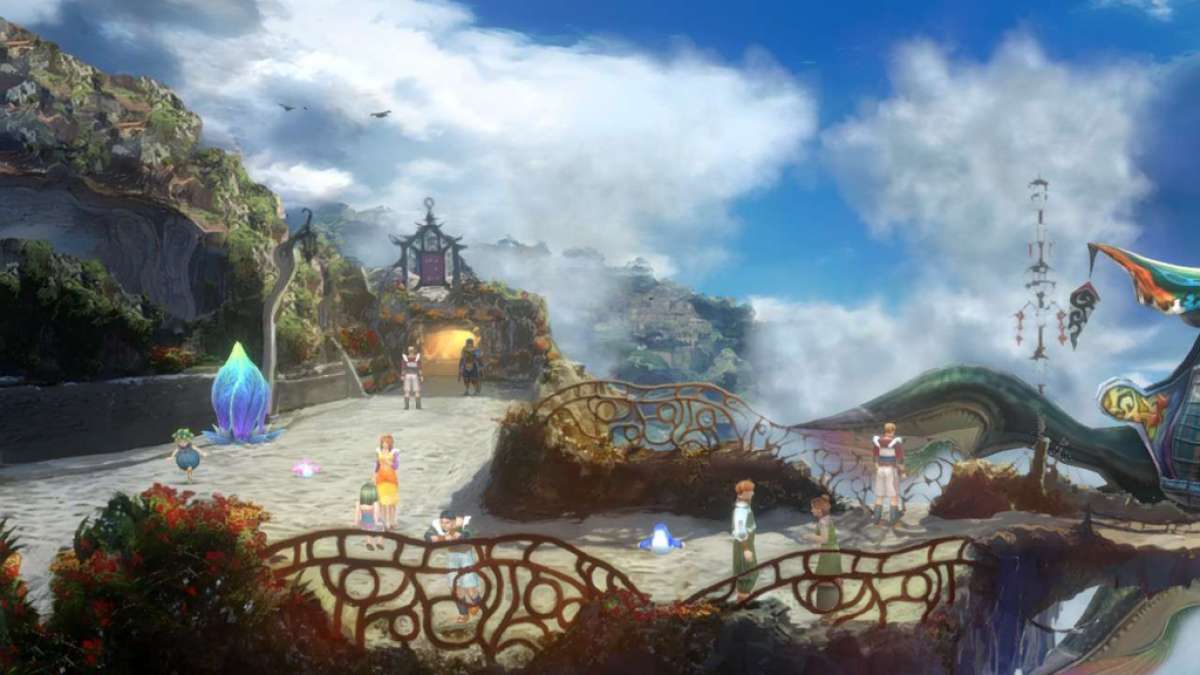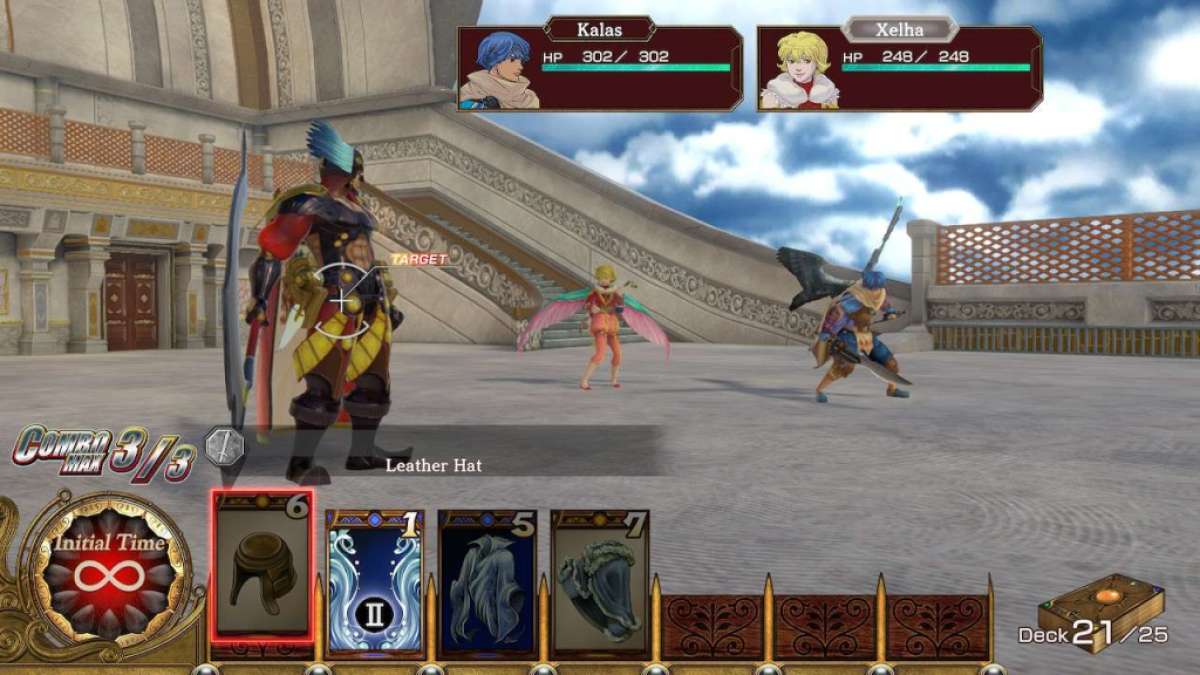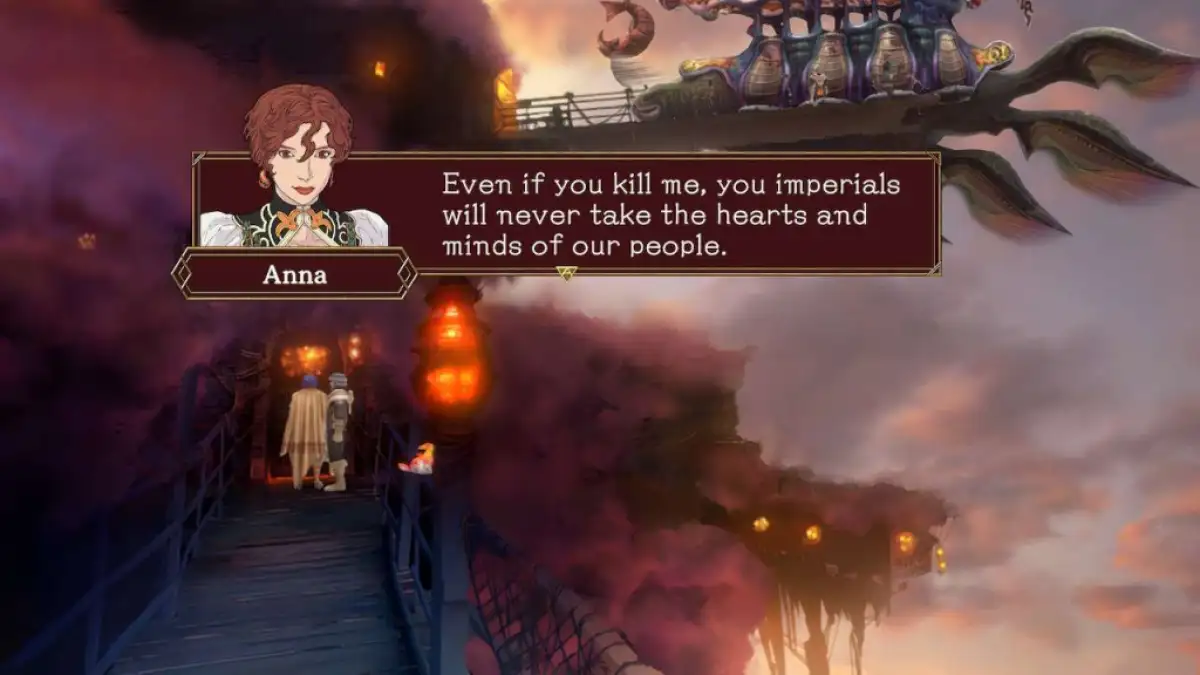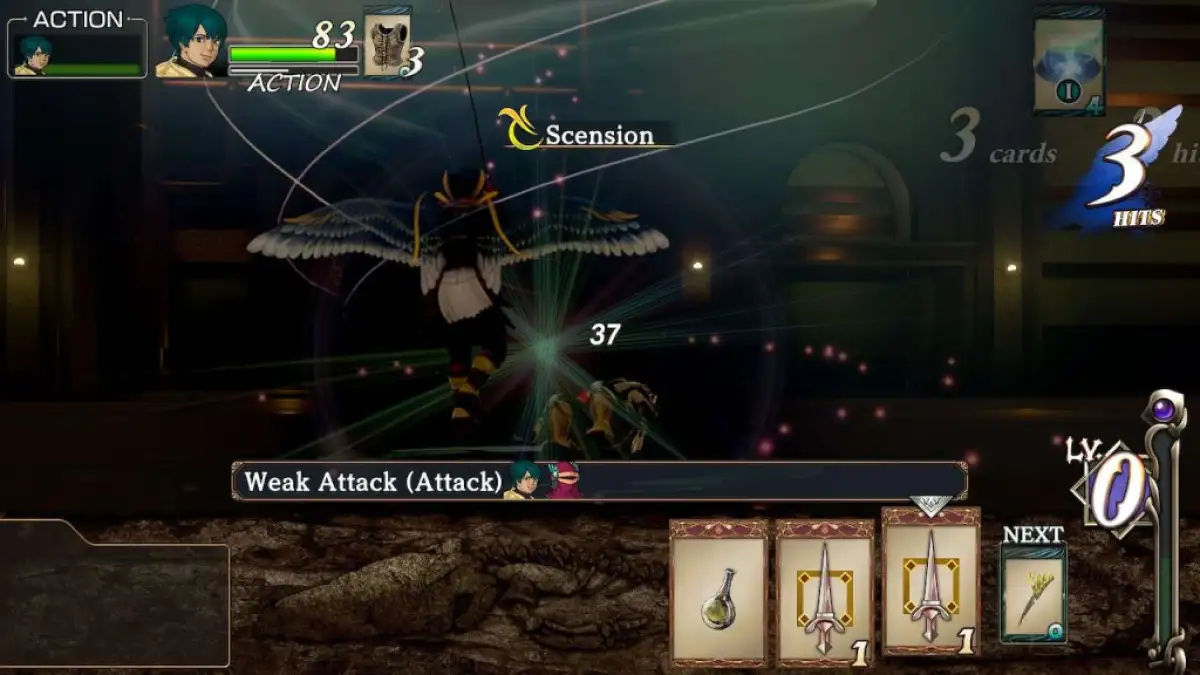The Baten Kaitos series is really special. Originally developed by Monolith Soft and tri-Crescendo and published by Namco, both titles released in Japan on 2003 and 2006 for the GameCube, and they barely made a splash outside of Japan. For one, Baten Kaitos Origins didn’t even release in Europe, leaving an entire continent unable to experience the prequel. These two cult classic RPGs have remained buried and nearly forgotten for 20 years. Fortunately, Baten Kaitos I & II HD Remaster is now here to change that.
Baten Kaitos: Eternal Wings and the Lost Ocean is the first entry in the series. The story follows a young man named Kalas in a quest to get revenge for the murder of his grandfather and sibling by the Alfard Empire, that eventually turns into a journey to fight a long-sealed evil and find the titular lost ocean. Baten Kaitos Origins is a prequel set 20 years before the events of the first entry, and it follows Sagi, a soldier from the Alfard Empire who embarks on an adventure to clear his name from a political murder he did not commit. In both games, the narrative twist features the player character as a spirit from another world that follows and talks to the protagonist directly, guiding and influencing their actions. While Baten Kaitos focuses on a more personal and intimate quest (as the protagonist is tied to Kalas,) and has a bigger and more traditional RPG party, Origins is more interested in further exploring and crafting a richer tapestry out of the world introduced in the first entry.

The world of Baten Kaitos is stunning, both narratively and visually (even more so thanks to the new HD pre-rendered backgrounds). The Baten Kaitos series takes place during the Era of the Sky, in an Earth where humans now live in floating islands. Each island is its own nation, different in both aesthetics and geopolitical intricacies. The allies and enemies that Kalas and Sagi meet along their travels through the world are interesting and carefully crafted. While the narrative of the first entry might lose some gas near the end, Monolith Soft didn’t pull any punches when creating the world for the series. It is fascinating seeing the Baten Kaitos and Xenoblade Chronicles series share so many narrative and aesthetic DNA, as well as tropes that the latter series would explore in more detail. The games even have a particular early 2000s vibe that reminded of me Final Fantasy X at times. While I personally prefer Sagi a lot, Kalas stands out, starting as an unlikeable and arrogant man that grows immensely thanks to interacting with the world and people around him, and making his own mistakes. Kalas holds a special place in my heart alongside Luke from Tales of the Abyss.
The gameplay of the Baten Kaitos series is experimental, to say the least. The games are turn-based RPGs, as well as card-based. Each card, or Magnus, is a piece of equipment, item, or special attack, and can be used in combat from each character’s customizable deck. Players will be able to play several cards in their attack turn to make optimal combos and deal damage, or heal allies. In the enemy’s turn, players will be able to use equipment cards to reduce the incoming damage. Equipment of the correct element must be used in order to reduce certain elemental damage, as well as exploit the enemy’s weaknesses. While Baten Kaitos offers a solid system for nearly 50 hours of game, Origins polishes the formula. In Origins, regular weapon cards have been turned into a simple Light, Medium, Heavy Attack cards, and have been streamlined. On top of that, the pacing of combat is amped, requiring more attention and reaction from players.

One particular gimmick of the series is that most Magnus are affected by the passage of in-game time. For example, the Green Banana attack Magnus will turn into the Bananas healing Magnus after a few hours, and this one in turn will transform into a Blackened Bananas stronger attack Magnus, and finally turn into almost useless rotten food. This also affect some Quest Magnus, items that players can capture in Blank Magnus by interacting with the environment. These are used to progress in the main quest as well as the plenty of side quests included in the game. Blank Magnus are limited, and players will need to carefully choose which Magnus to carry with them for possible quests, and when to do so, as time can really mess up the pacing of these side quests. While time-management aspect of Magnus is charming, and it doesn’t interfere with the main quest, it can be tedious for those interested in completing side-quests and optional content.
All of these gameplay aspects remain unchanged in Baten Kaitos I & II HD Remaster, but some QoL additions were implemented as well. These include a pause menu that allows to speed up the game outside and inside of combat, avoid enemy encounters, auto-combat, and One Hit KO attacks. While these features are fine, they don’t feel enough in terms of quality of life. In fact, speeding up combat is often a terrible option unless paired with instant KOs or auto-combat, as the speed makes it impossible to react to enemy attacks or input your own card combos. On top of that, these optional settings can only be changed outside of combat, making some of them pretty much useless. I wish that these optional QoL features would have focused on Magnus and the time management aspect, as these are the most tedious aspects of the series.

Fortunately, both Baten Kaitos and Origins are pretty solid gameplay-wise and have aged decently (unless you are trying to get the Splendid Hair Magnus). The new HD visuals and improved detail on character models are the main draw in this re-release, and they make the games look gorgeous. The pre-rendered backgrounds now boast a higher resolution and are a treat to look at. I cannot understate how stunning the games look, and how well the backgrounds have aged. However, the stylized contrasting shadows in character models has been lost, and I could see some players missing this artistic choice. Weirdly enough, character shadows look worse in the Switch version as well, with the direction these are projected seemingly being random. Some particle effects also look out of place in the HD version. For example, a particular fog effect in the first dungeon is way too overblown, and some fire effects later on look too subtle.
The biggest letdown with Baten Kaitos I & II HD Remaster is the lack of the original English dub. Both games are only available with its Japanese voiceover. In an ironic and sad twist, the opening cinematic for Baten Kaitos is completely voiced in English. While the English dub of the first game was infamous for its lack of quality, there is no excuse for not including them and giving the option to change between English and Japanese. In addition, performance was compromised when the game first launched, with the framerate being all over the place, and noticeable slowdown happening during combat and outside of it. Fortunately, Bandai Namco addressed this with a patch shortly after release, making the experience smoother.

General sound effects for both games have been revamped. They sound more subtle than the GameCube sound effects, but generally fit the feel of the game pretty well. The soundtrack of the Baten Kaitos series is handled by Motoi Sakuraba, and it is truly exceptional. Electric guitar and synthesizer riffs during combat contrast dreamlike string and wind instrument compositions, some accompanied by the sound of an ocean that no longer is. I encourage everyone to search for “To the End of the Journey of Glittering Stars” and give it a good listen.
The Baten Kaitos series is JRPG royalty. Both are experimental, engaging, and rich games that explore a gorgeous world carefully crafted by veterans at Monolith Soft. While the Baten Kaitos I & II HD Remaster leaves a lot to desire in terms of its QoL features, and makes the fatal mistake of not including the original English dub, the new HD visuals are stunning, and packaging both games for $50 is a great deal. I can understand that the aforementioned problems can be a dealbreaker to some. However, I have a hard time not recommending the HD Remaster, as it makes two incredible cult classics easily available and more gorgeous than ever.
Baten Kaitos I & II HD Remaster is immediately available for the Nintendo Switch.
Two JRPG masterpieces return. Baten Kaitos: Eternal Wings and the Lost Ocean and Baten Kaitos Origins are back with improved graphics and new features to aid game progression, making them even easier to play!
Baten Kaitos I & II HD Remaster brings back two fantastic cult classics with improved visuals, and some limited QoL features.
- Make sure to agree with Kalas and Sagi when given the choice to improve the odds of drawing Spirit Attack cards and combo cards.
- You don’t need to go for 100% completion. One of the Magnus needed to achieve it requires two weeks (336 hours!) of in-game time to unlock.
- I am repeating myself, but the HD pre-rendered backgrounds are out of this world.


Published: Oct 19, 2023 03:00 pm